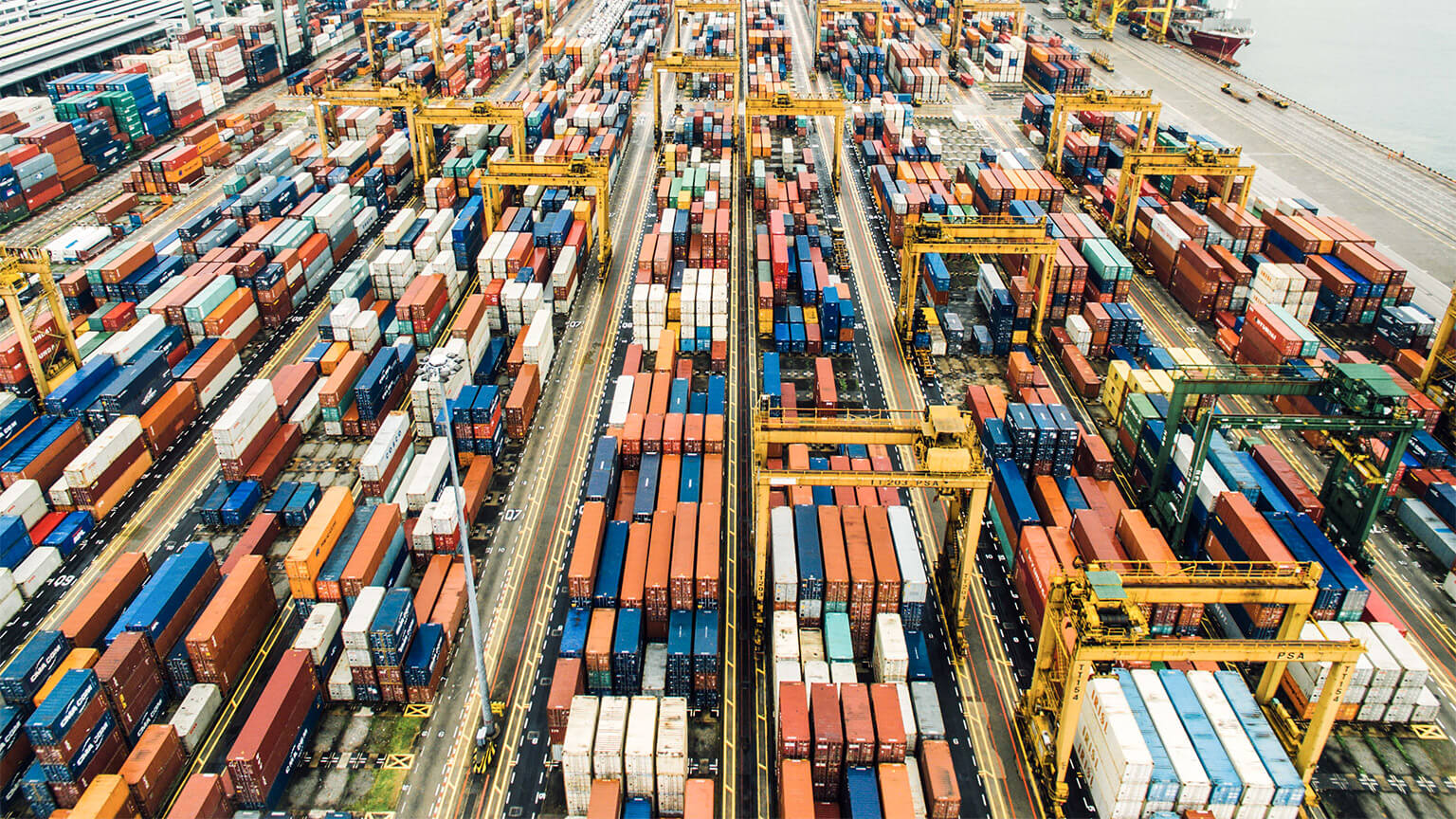There are several factors within an economy that have wide-reaching impacts that are macroeconomic factors. For example, the overall flow of money and the price at which money (capital, funds, investment) moves from entity to entity, from households to businesses, and business to business. In considering the elements of macroeconomics, we take a broader look at demand and supply and consider Aggregate Demand and Aggregate Supply – the overall level of economic activity. Understanding the state of the economy over time, and the flow of capital, including where it is moving from and to, will be of interest to businesses, governments, companies, and all affected by national economic conditions. This will include every citizen.
Welcome to Topic 7: Macroeconomics. In this topic, you will learn about:
- Circular flow
- Aggregate Demand (AD)
- Aggregate Supply (AS)
- National, International Circular Flow.
These relate to the Subject Learning Outcomes:
- Interpret economic models, diagrams and tables to describe the economic situations.
- Explain how government policy influences microeconomic choices and macroeconomic outcomes.
- Analyse the economy as a whole using macroeconomic models.
Welcome to your pre-seminar learning tasks for this week. Please ensure you complete these prior to attending your scheduled seminar with your lecturer.
Click on each of the following headings to read more about what is required for each of your pre-seminar learning tasks.
Read Chapter 33 of the prescribed text – Mankiw, NG 2016, Principles of microeconomics, 8th edn, Cengage Learning Custom Publishing.
Watch the video Copus, T 2020, Circular flow diagram, streaming video, YouTube and complete the following tasks:
- Identify some economics terms from the video and list them with descriptions in your reflective journal. You can access the reflective journal by clicking on ‘Journal’ in the navigation bar for this subject.
- Identify what the factors are in the video
- Explain the following phrases:
- Labour, when monetised, is referred to as…
- Sometimes the price of labour is referred to as…
In your reflective journal complete the following tasks:
- Read the article by Amedeo, K 2021, What is aggregate demand?, the balance.
- Define aggregate demand (AD) in your own words.
- Identify how AD is calculated.
- Calculate the AD for two different data inputs.
Hint: Use the formula identified in the online article by inserting new values and calculating the AD. The formula for aggregate demand is the same as the one used to measure nominal GDP where AD = GDP or Y.
Watch the video by Inspirare 2016, Aggregate supply – aggregate supply and aggregate demand (1/4) Principles of macroeconomics, streaming video, YouTube.
In your reflective journal, complete the following tasks:
- Identify what happens with wages as AD increases and decreases.
- Identify one (1) important factor that may increase potential GDP.
In your reflective journal, complete the following tasks:
- Read the following article by Bondarenko, P 2017, Gross domestic product, Encyclopedia Britannica.
- Identify and record the GDP formula.
Hint: this formula and all its elements will be important to understand for your final assessment.
- Read the article, Trading Economics 2021, Australian GDP growth rate, Trading Economics.
- Review the charts of economic growth over the long term for Australia. Look particularly at the years 1990/91 and 2020 identify in your journal what you believe would have been happening with unemployment during these times?
Examine this infographic on circular flow by the Federal Reserve Bank of Atlanta.
Examine and analyse the circular flow of economic activity. In your reflective journal, identify three (3) key takeouts from this infographic.
Read the following content.

Macroeconomics
When looking at macroeconomics, it is essential to examine an entire economy in a consolidated view. Rather than just taking a national perspective, it is best examined from a 'whole country perspective'. There are many boundaries (natural and artificial) to a country that impact the nature of an economy. Neighbouring countries trade freely and daily in some parts of the world, such as Malaysia and Singapore. However, walls, borders, and hostilities between countries that may include trade embargoes remain present in other parts of the globe.
A trade embargo is when one country (or group of countries acting through the United Nations forum) makes it illegal for its citizens and companies to trade with another country (Aswathappa 2008). This is a means of putting economic pressure or economic sanctions on the country as a result of particular conduct being considered unacceptable. In our final topic of the subject, we look specifically at international economics. It is essential to note the national economic perspective and recognise that there is international trade over and above the national economy.
To further understand circular flow, we can take examples from day-to-day activities where we might see common transactions. The following example will highlight how one transaction, that might happen multiple times, can create an additional economic flow (Dwivedi 2016). As you progress through this topic and this subject, keep in mind, the examples of flow of money, other goods, inputs and outputs to assist in a solid understanding of circular flow.

For example, a teenager as a casual employee gets a small pay rise or additional overtime shift, so they buy takeaway food and a soft drink at a shop. If enough similar transactions happen such as more teenagers getting extra pay, more takeaway meals/drinks, the takeaway shop will need to invest in a bigger drinks fridge and more staff. So then the shop owner invests (capital), buys more supplies, so the farmer now has more demand, and so does the transport company freighting the supplies. And so it goes on. The transport delivery driver is now working extra hours delivering more supplies to the shop and buying new additional takeaway meals and drinks transactions and repairs and maintenance on the transportation trucks. This happens thousands of thousands of times over through multiple participants in different forms of labour and other inputs. When demand is growing altogether, it drives the economy to grow.
The opposite is happening in a contracting economy. If the teenager loses their job, no takeaway food is bought, less casual staff at the shop, fewer transport deliveries are required, and the circular flow is reduced, as the economy contracts. This is a simple but genuine illustration of economic growth. As we saw previously when analysing elasticity; as peoples’ incomes rise, they spend more on eating out (and other discretionary wants). As incomes fall, they spend less and eat at home more cheaply. When this happens for millions of people and tens of millions of transactions, the whole economy grows/expands or shrinks/contracts, or at least slows its rate of growth. The money is simply the circular flow washing through all the participants in the economy constantly being reinvested to take away food, farm supplies, drinks production, transport trucking and fuel, retail drinks fridges and other equipment, and so on and on.
This illustration uses the takeaway meal example which is a want, not a need. Even in slower economic growth, the demand for needs such as food, housing, fuel, and other inelastic demand items may be sufficient to sustain some economic growth, albeit at a lower rate. For example, during the pandemic in Australia, the many millions of dollars previously spent on international tourism in some areas, was redirected to domestic tourism, including camping and mobile homes. In addition, many people also paid off debt, so their funds flowed into the banking sector.
The key topics for macroeconomics for our consideration include:
- Circular Flow
- Aggregate Demand AD
- Aggregate Supply AS
- National, International Circular Flow.
Beyond the national or domestic boundaries of GDP, a broader perspective considers the allocation of resources being more efficient for certain goods in another country. For example, electronics purchased by an Australian citizen from companies based in manufacturing locations in Japan and China. These countries are more efficient or have a comparative advantage in the manufacture of electronics.
Learning Task 1: Aggregate demand and aggregate supply
Watch the video on aggregate demand (AD) and aggregate supply (AS) from the Reserve Bank of Australia. Watch the first part of the video and stop at 7min, 15 sec.
After watching the video, answer the following questions in your reflective journal:
- Identify the inputs of AS.
- Identify two (2) factors that may lead to an increase in AS for the economy.
- Identify any similarities between microeconomics and the surge pricing or rideshare services at peak demand times, compared with when GDP or AD can temporarily exceed the potential GDP level.
- Consider the temporary upward AD and its impact on AS in the lead up to Christmas in Australia, with retail, consumer goods, groceries, transport, and travel sectors experiencing higher demand temporarily. Discuss why the economy and GDP do not stay at the previous December high level, in February after Christmas?
The later part of the video talks about aspects of the economy we shall cover in the next topic.
Learning task 2: Aggregate Supply
Read the following article:
- CFI 2021, What is aggregate supply and demand, CFI Education Inc.
Examine the graph of the market illustrating short-run AD and long-run AS carefully. This illustrates how additional supply can be available along with the potential GDP or supply curve in the short run. However, at a point, additional investment (in wages, machinery, and so on) is required to sustain a new long-run level of supply production.
Task: Identify factors that can affect the aggregate supply level in the economy and determine if this is in the short run or the long run? Write answers in your reflective journal.
Learning task 3: Formula
Read the following article:
- Worldometer n.d., What is GDP, worldometer
The following formula is needed to calculate GDP with the expenditure approach:
GDP = private consumption + gross private investment + government investment + government spending + (exports – imports)
or, expressed in a formula:
GDP = C + I + G + (X – M)
Often in Australian economics in this formula GDP is identified as Y.
Questions:
- For a growing economy, would you expect X or M to be the greater? Why ?
- For a growing economy, would you expect I to be growing or contracting? Why?
Hint: A perspective to consider that may be helpful to understand the impact of Macroeconomics on the economy is to consider it as a spiral. Either a positive spiral of growth or a negative spiral of contraction or decline. There is a direct impact of each macroeconomic factor on the other factors. For example, when GDP goes up, unemployment goes down. Interest rates go up, and investment goes down. The flow is either in equilibrium or being driven up(growth) or negatively contracting. Of course, like any economic indicators, it is important to look at the trend, the multiple year views the long run. Is the economy growing, but growing at a rate that is slowing down compared to previous years, such as China's in 2020-2021.
“So China’s economic growth may have slowed, but it’s not slow” (Holden 2021).
Learning task 4: China's GDP
Read the article by Cheng, E 2021, China GDP disappoints, third-quarter growth slows to 4.9%, CNBC.
Task: In your reflective journal, identify as many economic factors impacted by the slowing GDP in China.
Knowledge check
Complete the following task
Key takeouts
Congratulations, we made it to the end of the seventh topic! Some key takeouts from Topic 7:
- Aggregate demand (AD) is the holistic view of the factors driving the economy in a period of time.
- Aggregate supply (AS) correlates to AD and takes into account the factors of production to generate economic activity and supply goods.
- Circular flow of economic activity is the national overview of movements of major economic flows through key participants in the national economy.
Welcome to your seminar for this topic. Your lecturer will start a video stream during your scheduled class time. You can access your scheduled class by clicking on ‘Live Sessions’ found within your navigation bar and locating the relevant day/class or by clicking on the following link and then clicking ‘Join’ to enter the class.
Click here to access your seminar.
The learning tasks are listed below. These will be completed during the seminar with your lecturer. Should you be unable to attend, you will be able to watch the recording, which can be found via the following link or by navigating to the class through ‘Live Sessions’ via your navigation bar.
Click here to access the recording. (Please note: this will be available shortly after the live session has ended.)

In-seminar learning tasks
The in-seminar learning tasks identified below will be completed during the scheduled seminar. Your lecturer will guide you through these tasks. Click on each of the following headings to read more about the requirements for each of your in-seminar learning tasks.
This learning task will be a discussion on the GDP formula: Y = C + I + G + (X – M), with a focus on what is happening in the overall economy where this is movement (up/down) in each of the elements of the formula:
- Consumption
- Investment
- Government
- Exports
- Imports
This part of the seminar will focus on assessment feedback and questions for the upcoming assessment.
Welcome to your post-seminar learning tasks for this week. Please ensure you complete these after attending your scheduled seminar with your lecturer. Your lecturer will advise you if any of these are to be completed during your consultation session. Click on each of the following headings to read more about the requirements for each of your post-seminar learning tasks.
Complete the following steps and write your responses in your reflective journal.
- Search online for a credible source of information on the 1997 Asian Financial Crisis and find out what the Australian government did in response to Asian Financial Crisis.
- Why did the government do what they did? What effect did government actions have on Aggregate Demand within the economy?
- What was happening to unemployment before the government’s action to intervene in the economy?
- After the Asian Financial Crisis impacts began and before the government intervention, was Aggregate Supply increasing or decreasing?
There is a discussion forum activity for this topic, which will enhance your knowledge and give you the opportunity to interact with your peers. You can access the activity by clicking on the following link. You can also navigate to the forum by clicking on 'ECO100 Subject Forum' in the navigation bar for this subject.
- Topic 7, Forum Activity 1: Aggregate demand and aggregate supply
Each week you will have a consultation session, which will be facilitated by your lecturer. You can join in and work with your peers on activities relating to this subject. These session times and activities will be communicated to you by your lecturer each week. Your lecturer will start a video stream during your scheduled class time. You can access your scheduled class by clicking on ‘Live Sessions’ found within your navigation bar and locating the relevant day/class or by clicking on the following link and then clicking 'Join' to enter the class.
Click here to access your consultation session.
Should you be unable to attend, you will be able to watch the recording, which can be found via the following link or by navigating to the class through ‘Live Sessions’ via your navigation bar.
Click here to access the recording. (Please note: this will be available shortly after the live session has ended.)

- Chapters 27-29 of Greenlaw, SA & Shapiro, D 2011, Principles of macroeconomics, OpenStax.
- Chapter 1, section 1.3 of McConnell, C, Brue, S & Flynn, S 2011, Economics: Principles, problems, and policies, 18th edn., McGraw-Hill.
References
- Aswathappa, K 2008, International business, 3rd edn., Tata McGraw-Hill Publishing Company Limited.
- Cheng, E 2021, China GDP disappoints, third-quarter growth slows to 4.9%, CNBC, https://www.cnbc.com/2021/10/18/china-economy-third-quarter-gdp-data-grows-4point9percent-missing-expectations.html
- Copus, T 2020, Circular flow diagram, streaming video, YouTube, https://www.youtube.com/watch?v=JXBIasqu4sM
- Dwivedi, DN 2016, Microeconomics: Theory and applications, 3rd edn., Vikas.
- Estevez, E 2021, Circular flow mode, Investopedia, https://www.investopedia.com/terms/circular-flow-of-income.asp
- Federal Reserve Bank of Atlanta n.d., Circular flow, Federal Reserve Bank of Atlanta, https://www.atlantafed.org/-/media/documents/education/classroom-economist/infographics/circular-flow/circular-flow-infographic.pdf
- Geert, G, Engstrom, E & Ermolov, A 2020, Aggregate demand and aggregate supply effects of COVID-19: A real-time analysis, Finance and Economics Discussion Series: Washington: Board of Governors of the Federal Reserve System, https://www.federalreserve.gov/econres/feds/files/2020049pap.pdf
- Holden, R 2021, Vital signs: Slower Chinese economic growth inevitable without internal reform, The Conversation, https://theconversation.com/vital-signs-slower-chinese-economic-growth-inevitable-without-internal-reform-170277
- Inspirare 2016, Aggregate demand and aggregate supply, streaming video, YouTube, https://www.youtube.com/watch?v=GjajF1OGtgw
- Lovicu, G 2020, Aggregate demand and aggregate supply, streaming video, YouTube, https://www.youtube.com/watch?v=OwDBKiLy1BI
